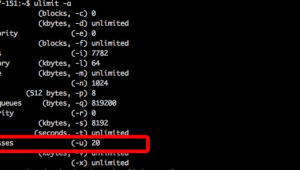linux多线程执行顺序
在Linux系统中,设置多个子线程是一项重要的操作,它能够显著提升程序的执行效率,充分利用系统资源。当我们需要同时处理多个任务时,子线程的合理运用就显得尤为关键。

要了解Linux下线程的基本概念。线程是进程中的一个执行单元,多个线程可以共享进程的资源,如内存空间等。这使得在同一进程内实现多个任务的并发执行变得更加高效。通过创建多个子线程,我们能够让不同的任务并行处理,减少等待时间,提高整体性能。
在Linux中,使用pthread库来创建和管理线程。要设置多个子线程,首先需要包含pthread.h头文件,这是使用线程库的基础。例如:#include
假设我们要创建三个子线程,分别执行不同的简单任务。下面是一个示例代码:
```c
#include
#include
// 线程函数1
void *thread_function1(void *arg) {
printf("This is thread 1\n");
pthread_exit(NULL);
}
// 线程函数2
void *thread_function2(void *arg) {
printf("This is thread 2\n");
pthread_exit(NULL);
}
// 线程函数3
void *thread_function3(void *arg) {
printf("This is thread 3\n");
pthread_exit(NULL);
}
int main() {
pthread_t thread1, thread2, thread3;
int ret1, ret2, ret3;
// 创建线程1
ret1 = pthread_create(&thread1, NULL, thread_function1, NULL);
if (ret1 != 0) {
printf("Create thread 1 failed: %d\n", ret1);
return -1;
}
// 创建线程2
ret2 = pthread_create(&thread2, NULL, thread_function2, NULL);
if (ret2 != 0) {
printf("Create thread 2 failed: %d\n", ret2);
return -1;
}
// 创建线程3
ret3 = pthread_create(&thread3, NULL, thread_function3, NULL);
if (ret3 != 0) {
printf("Create thread 3 failed: %d\n", ret3);
return -1;
}
// 等待线程1结束
ret1 = pthread_join(thread1, NULL);
if (ret1 != 0) {
printf("Join thread 1 failed: %d\n", ret1);
return -1;
}
// 等待线程2结束
ret2 = pthread_join(thread2, NULL);
if (ret2 != 0) {
printf("Join thread 2 failed: %d\n", ret2);
return -1;
}
// 等待线程3结束
ret3 = pthread_join(thread3, NULL);
if (ret3 != 0) {
printf("Join thread 3 failed: %d\n", ret3);
return -1;
}
printf("All threads have finished\n");
return 0;
}
```
在上述代码中,通过pthread_create函数分别创建了三个子线程,每个线程执行不同的函数。创建成功后,使用pthread_join函数等待每个线程结束,确保主线程不会过早退出。
除了基本的创建和等待线程结束,还需要注意线程同步和资源共享的问题。当多个子线程同时访问共享资源时,可能会出现数据竞争等问题。例如,如果两个线程同时对一个共享变量进行读写操作,可能会导致数据不一致。为了解决这个问题,可以使用互斥锁(Mutex)、条件变量(Condition Variable)等同步机制。
互斥锁用于保证在同一时间只有一个线程能够访问共享资源。通过pthread_mutex_t定义互斥锁变量,使用pthread_mutex_init初始化,pthread_mutex_lock加锁,pthread_mutex_unlock解锁。例如:
```c
pthread_mutex_t mutex;
pthread_mutex_init(&mutex, NULL);
// 在线程函数中访问共享资源前加锁
pthread_mutex_lock(&mutex);
// 访问共享资源
//...
pthread_mutex_unlock(&mutex);
```
条件变量则用于线程间的协作,当某个条件满足时,通知等待该条件的线程。使用pthread_cond_t定义条件变量,pthread_cond_init初始化,pthread_cond_wait等待,pthread_cond_signal通知。
在Linux中设置多个子线程需要掌握基本的线程创建、管理以及同步机制。合理运用这些技术,能够编写出高效、稳定且功能强大的多线程程序,充分发挥Linux系统的性能优势,满足各种复杂的应用场景需求。通过不断实践和深入理解,我们能够更好地驾驭多线程编程,为解决实际问题提供有力的支持。



